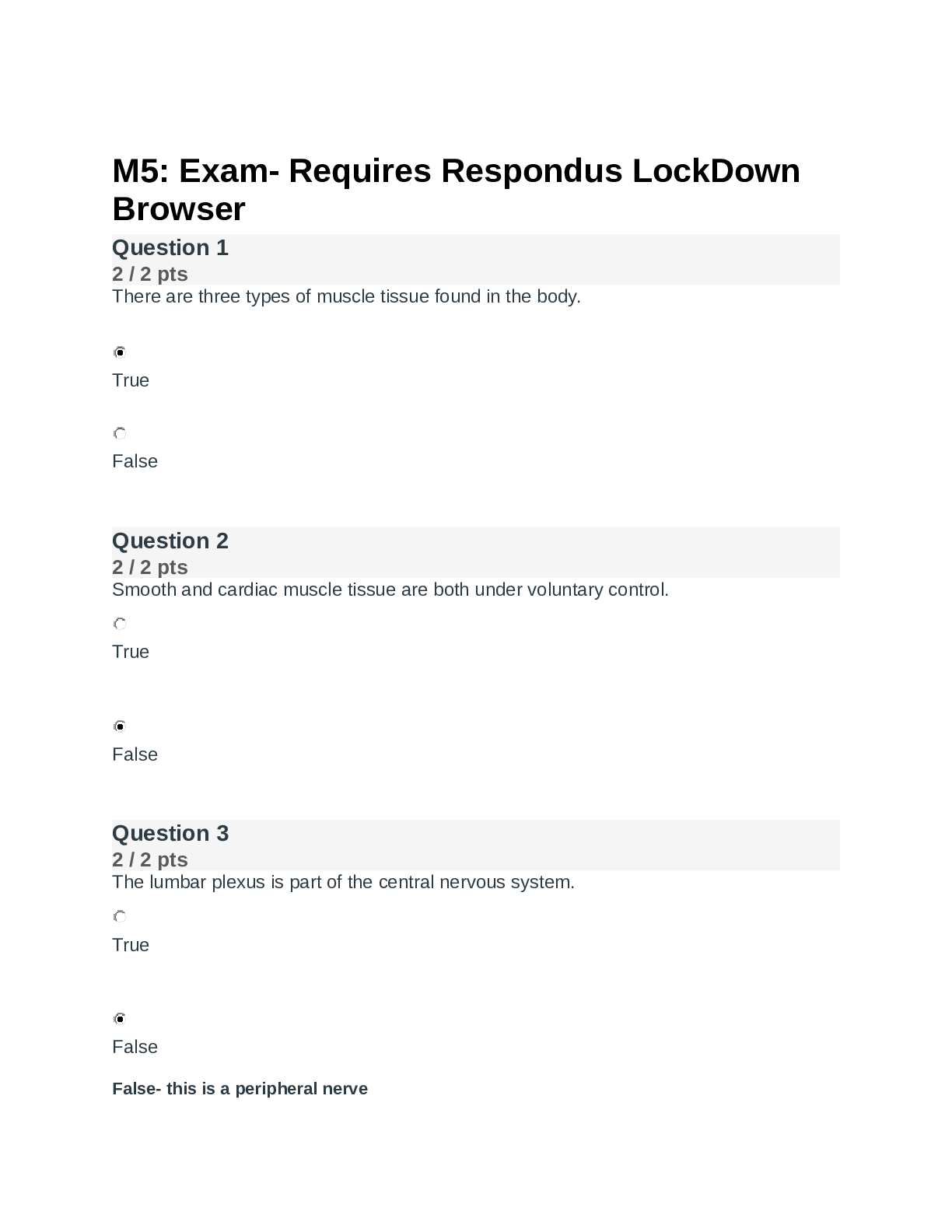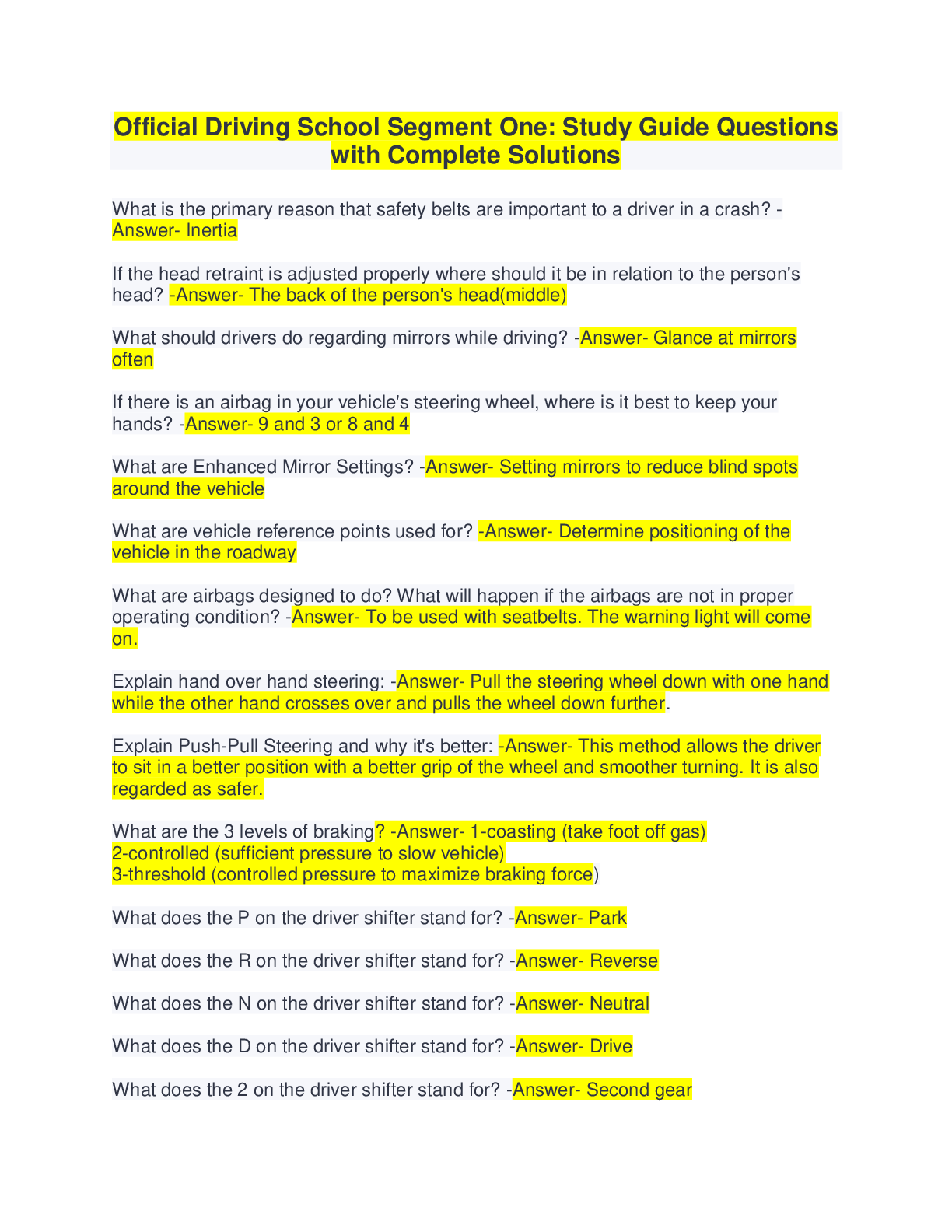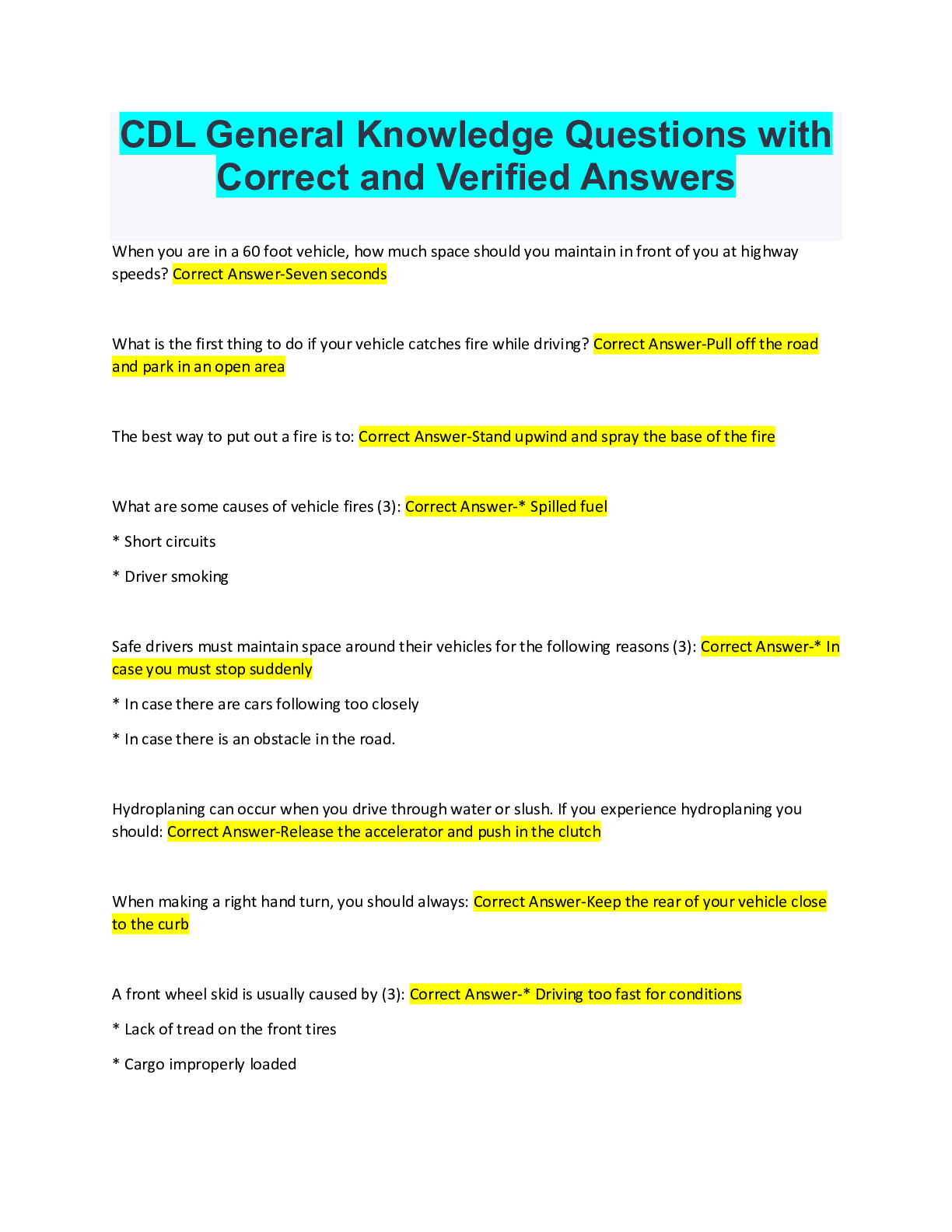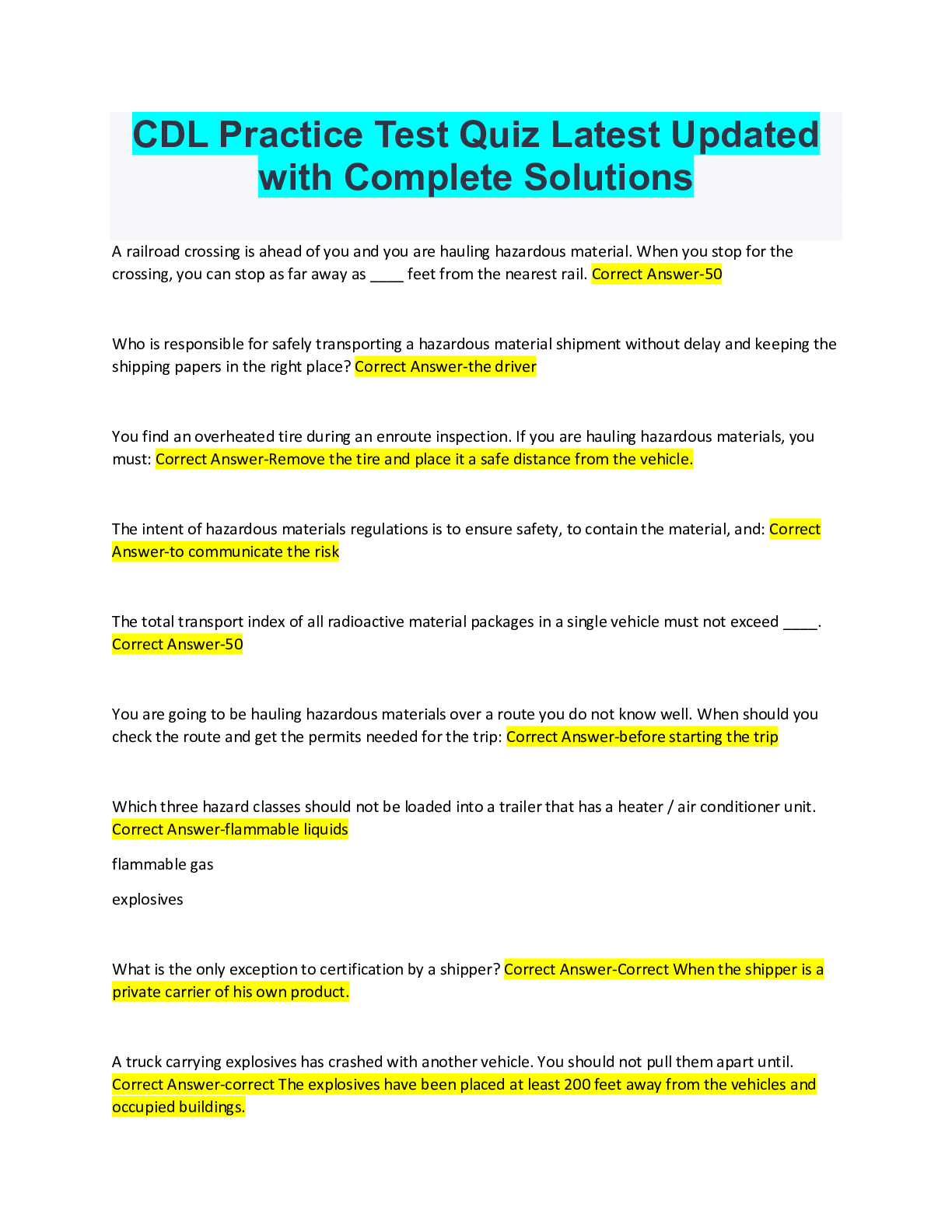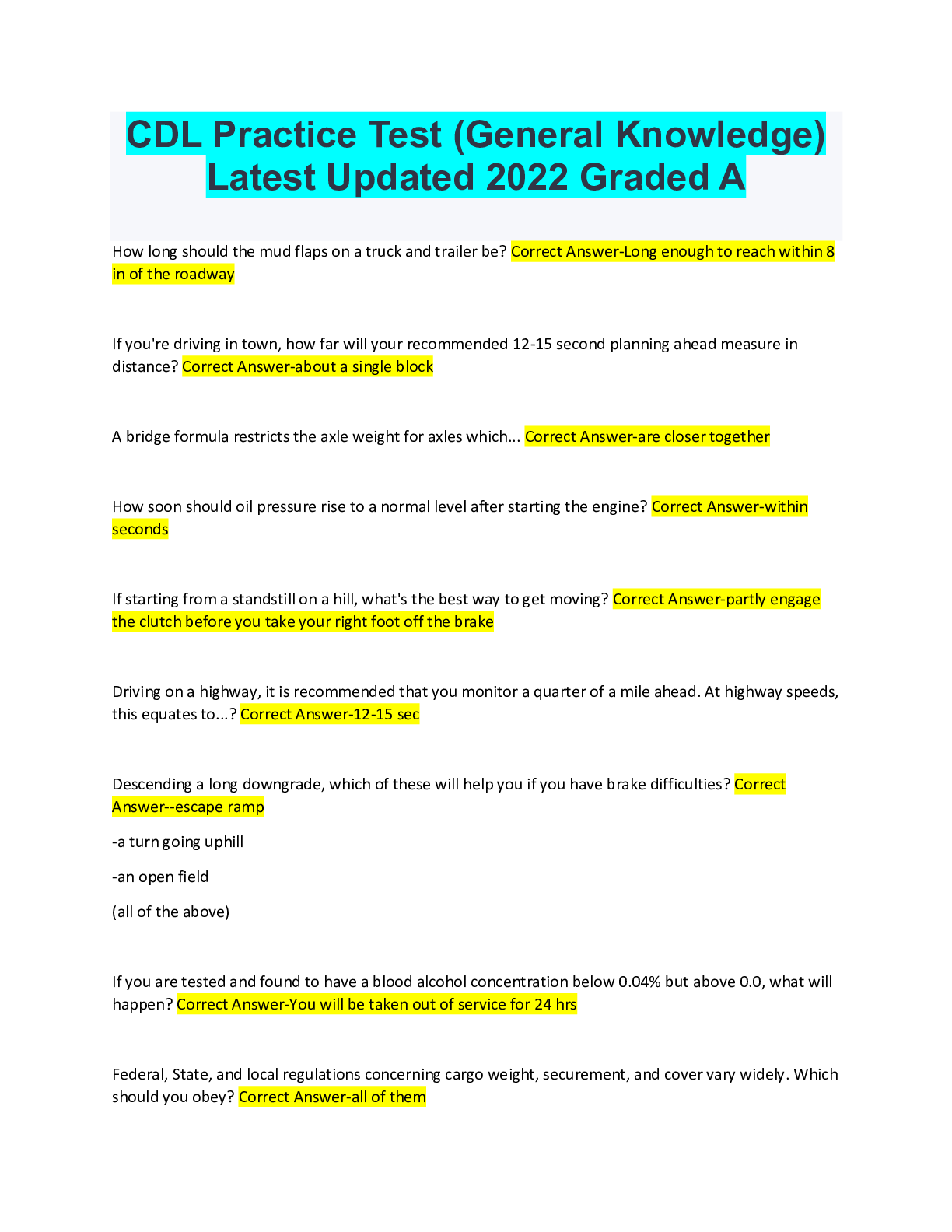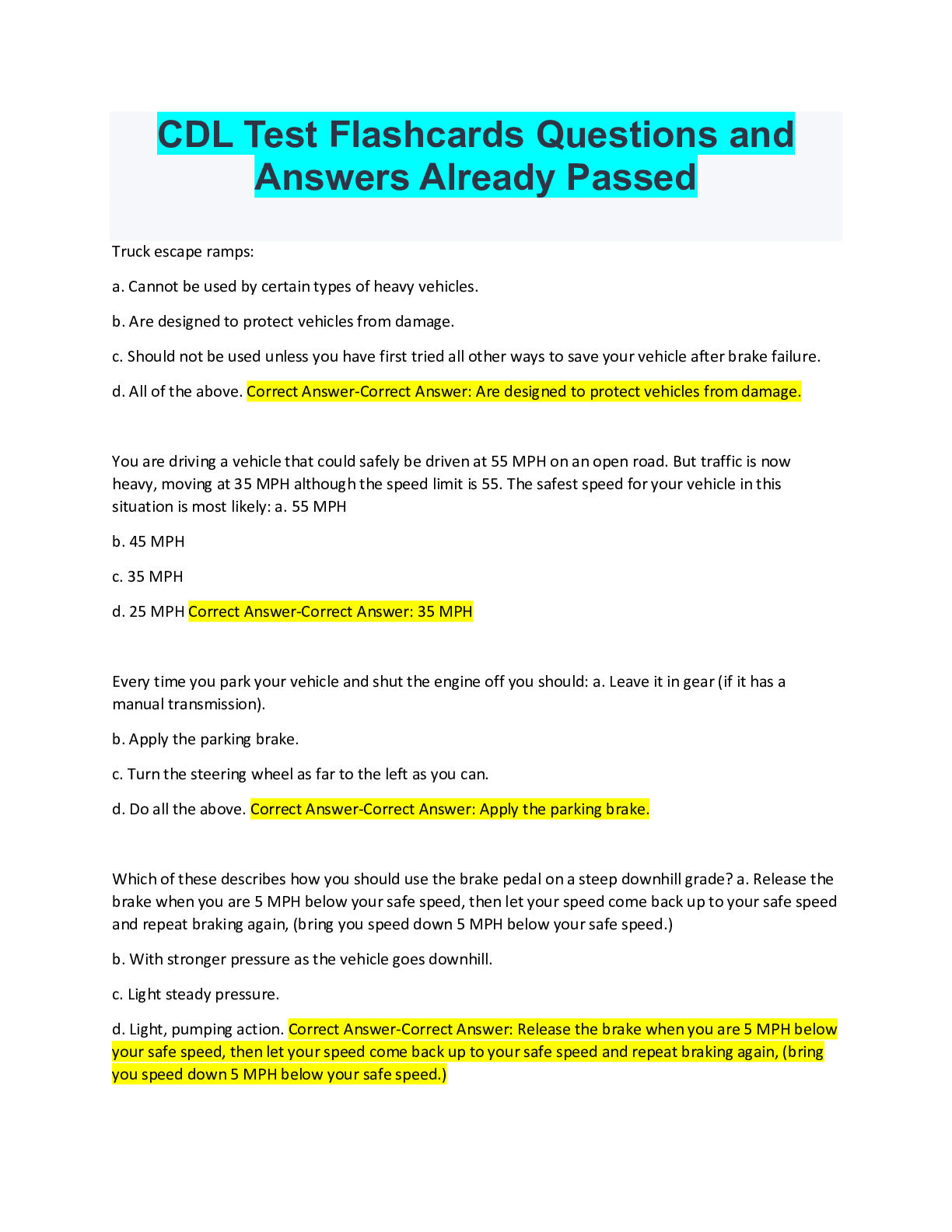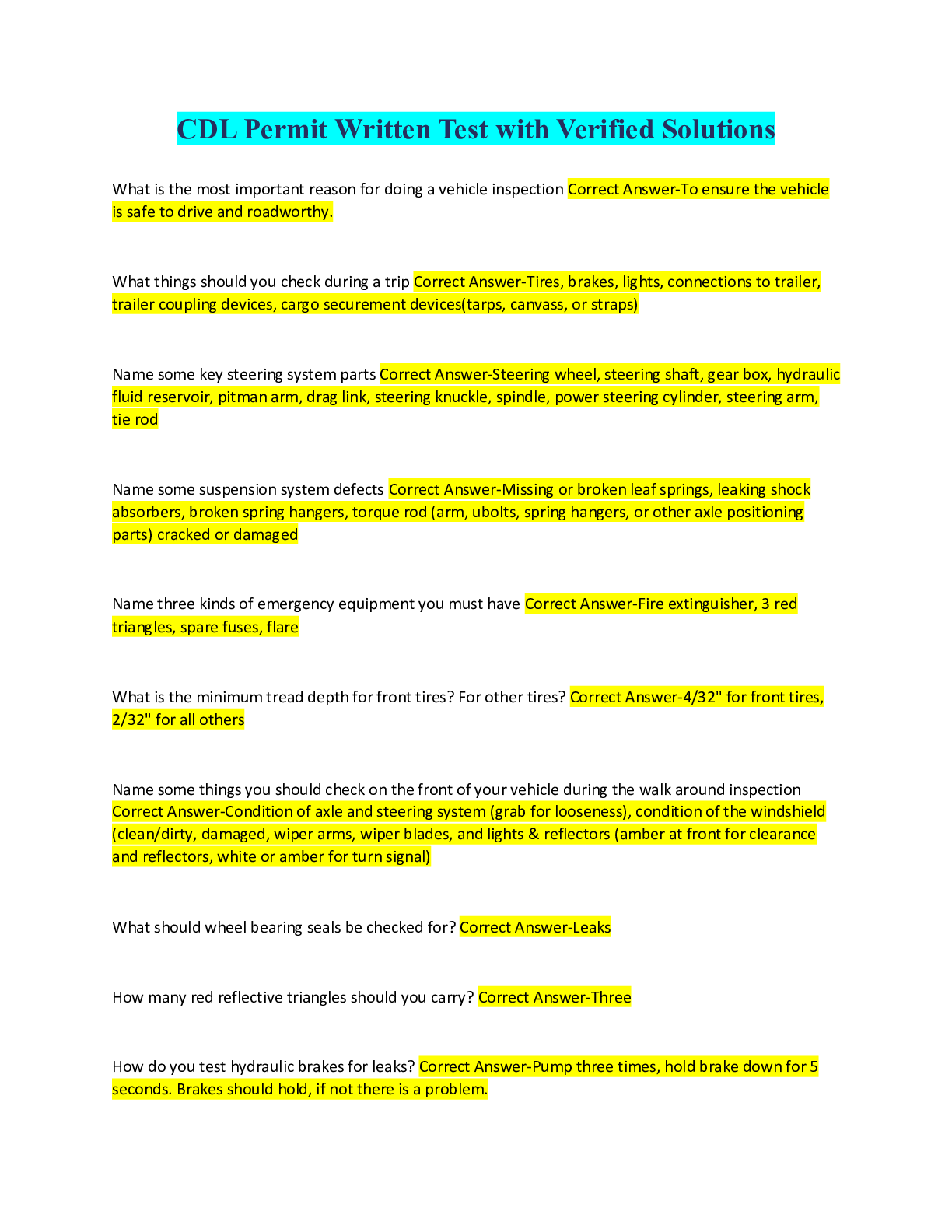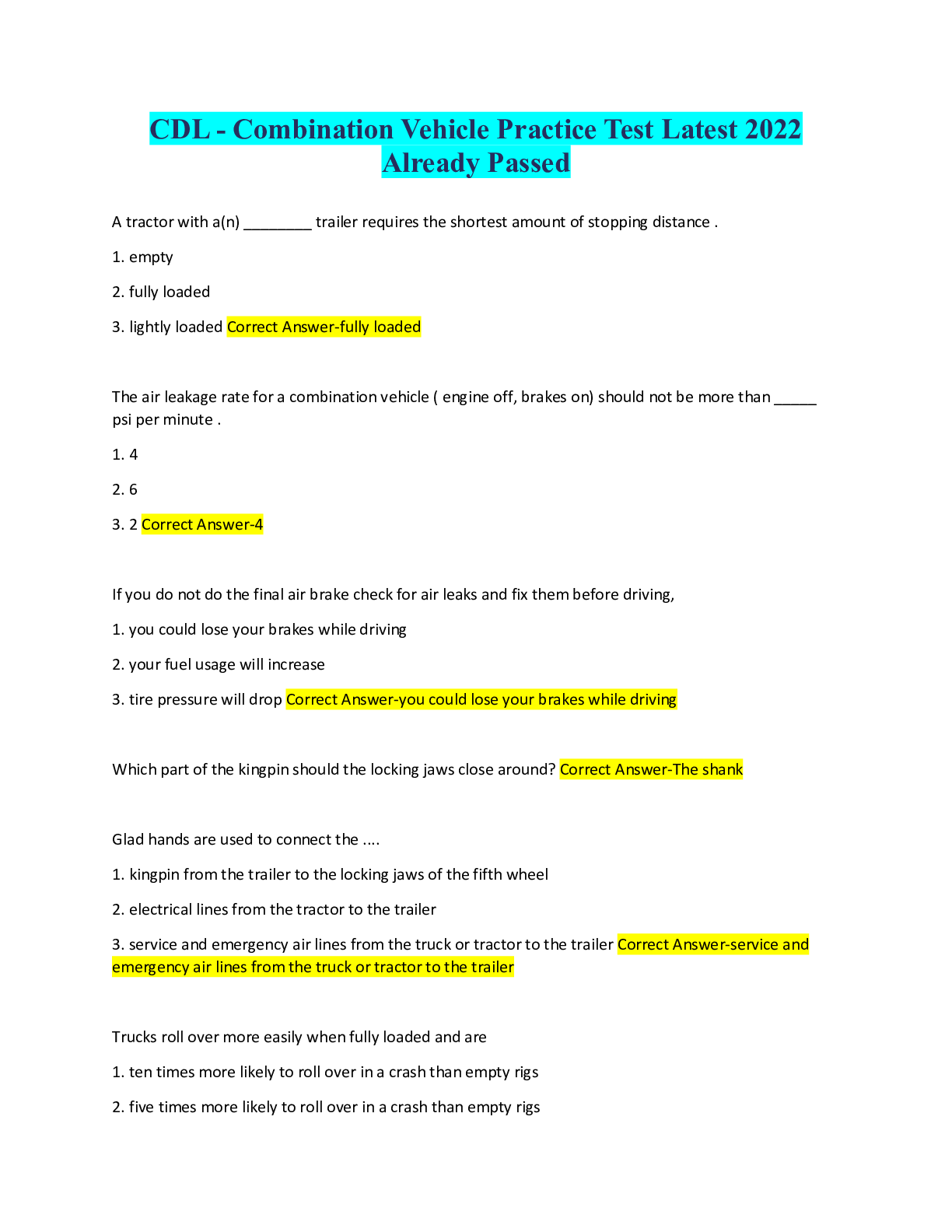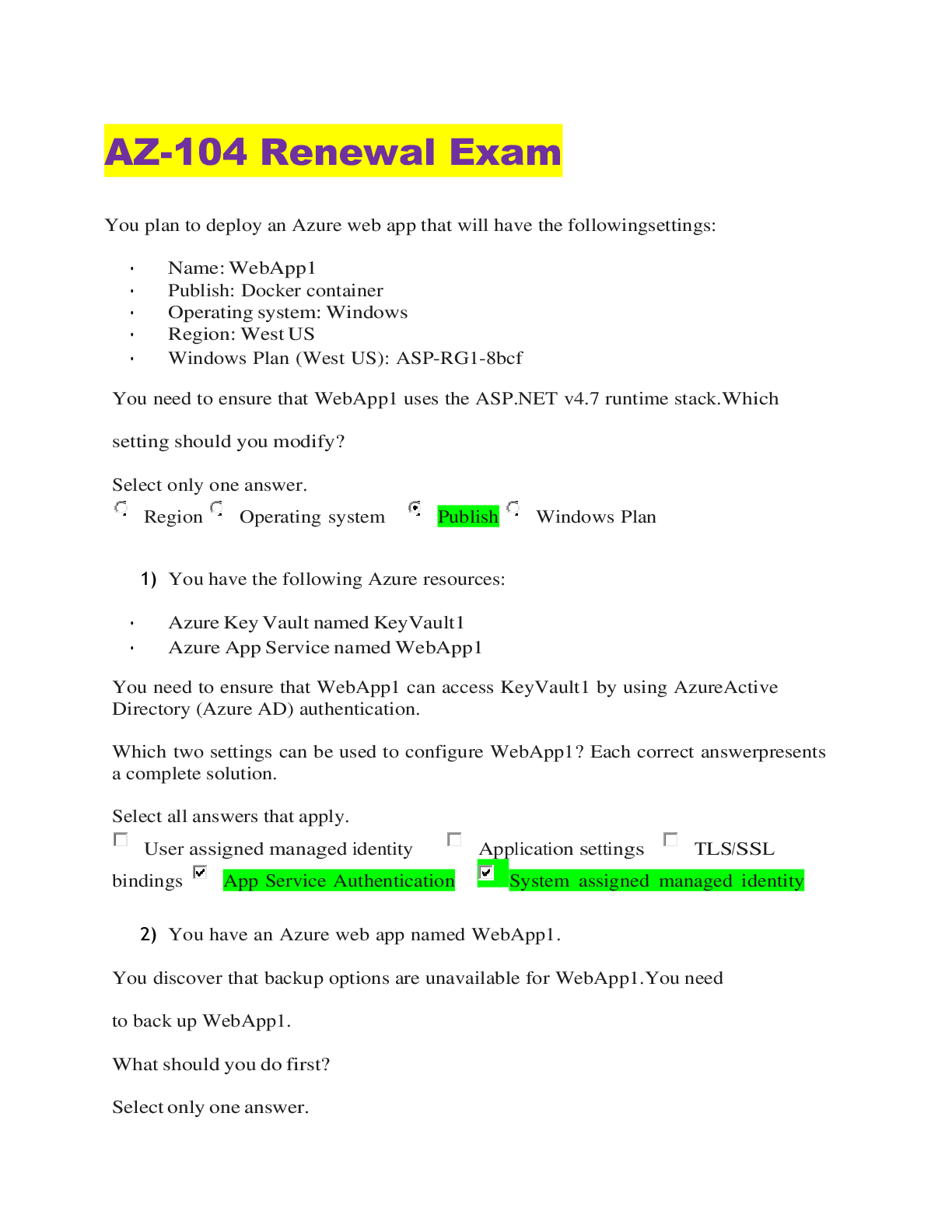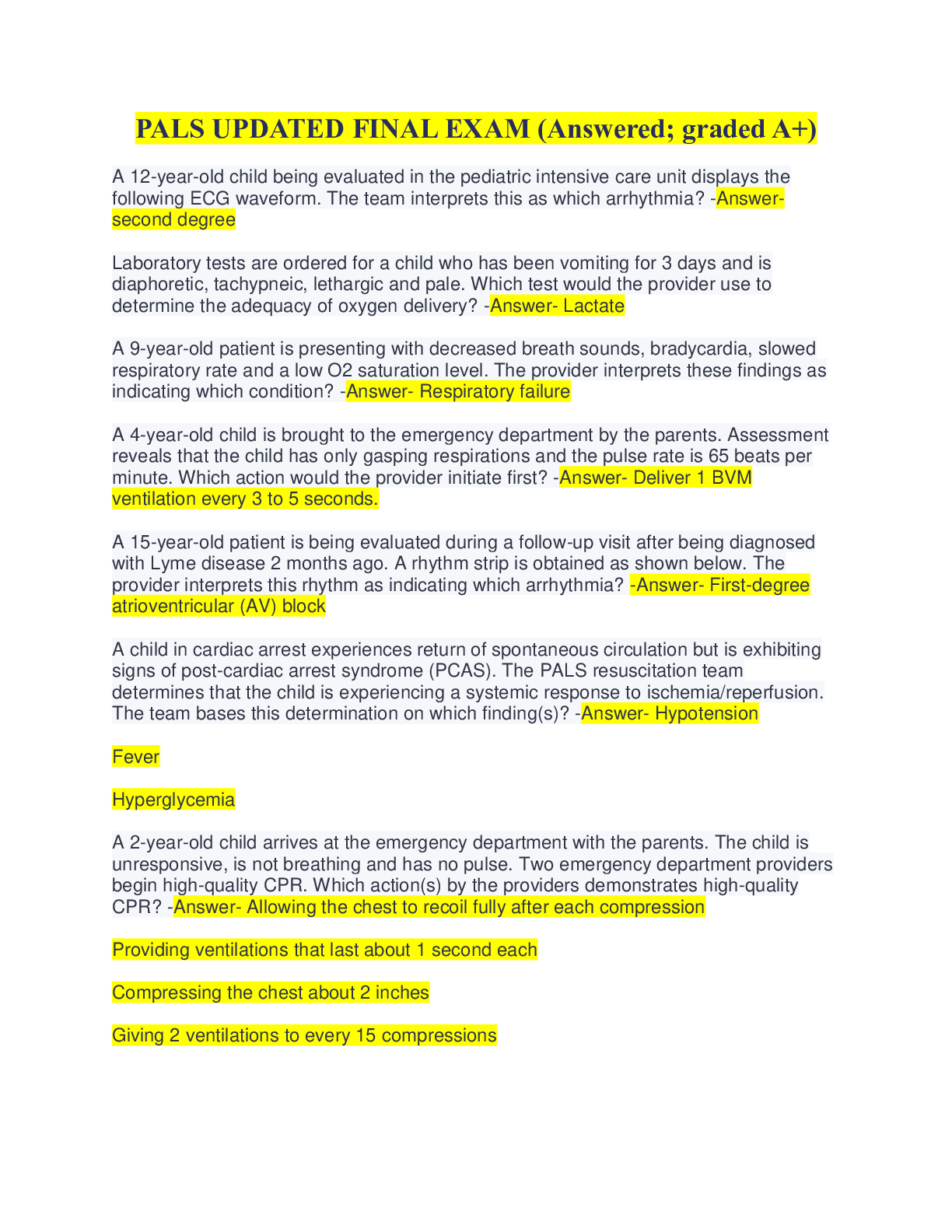Biology > QUESTIONS & ANSWERS > A&P 1 101 Answers of All Modules- Final Portage Learning (All)
A&P 1 101 Answers of All Modules- Final Portage Learning
Document Content and Description Below
Pre Exam Questions 1. Describe the position of the epigastric region relative to the umbilical region in anatomical position terms. Use a full sentence for your description · The epigastric region ... is superior to the umbilical region. (OR) The umbilical region is inferior to the epigastric region. 2. Which anatomical action is occurring at the elbow joint, in the direction of the arrow? · (Elbow) Flexion 3. Look at the figure below. The right femur is moved in the direction of the arrow. What anatomical action term best describes this movement? · Abduction (The femur is moving away from midline) Matching: 1 A. Emphysema B. Pleurisy C. Pulmonary edema D. Cystic Fibrosis A. Emphysema- Smoking is often the cause of this disease. B. Pleurisy This is inflammation of the pleurae. D. Cystic Fibrosis- With this disease, mucus clogs the respiratory tract. C. Pulmonary edema- This condition results in fluid-filled alveoli. Answer the following two questions: 1. Explain why a patient with liver disease would have intolerance to fatty foods. · The liver produces bile which breaks down fats. If it is not producing bile (or less bile), fats will not be broken down effectively. 2. Explain in detail how the stomach contents enter the small intestine. · The pyloric sphincter (valve), located at the base of the stomach, relaxes causing a small quantity of chyme to pass through the opening into the first part of the small intestine. This initiates a reflex that causes the muscles of the sphincter to contract and close the opening temporarily. Then the sphincter relaxes again and allows more chyme to enter. Label the diagram below, including left or right. Discuss the purpose of tooth (B). A: Mandible B:Right Molar C:Right Premolar (bicuspid) F:Right Central Incisor Purpose of tooth type B: Flat molars for crushing food 2 1. Label the following bone landmarks: B:Supraspinatus fossa D:Acromion E:Neck H:Lateral border I:Inferior angle 1. Yellow bone marrow: A. is found primarily in long bones. B. is found primarily in short and flat bones. C. is found primarily in newborns, not adults. D. produces red blood cells. 2. The diaphysis of a bone: A. is found at the ends of long bones. B. contains the articular cartilage at joint articulations. C. contains the proximal epiphysis. D. is the center length of a bone. E. both A. and C. 3. Compact bone: A. forms the exterior of bones. B. forms the interior of bones. C. is lighter than spongy bone. D. contains numerous bars and plates with irregular spaces. E. both B. and D. 4. Intramembranous ossification is the formation of _______ from ________: A. a growth plate; the center of a bone. B. long bones; hyaline cartilage. C. flat bones; connective tissue. D. a primary ossification center; a cartilaginous disc. E. both A. and C. 5. What term best describes the type of fracture pictured below? Greenstick (the bone is broken, but not all the way across) 3 Answer the following five short-answer questions: 1. Tendons connect which types of tissue? Connect muscle to bone 2. Acetylcholine is what type of substance? Neurotransmitter 3. During a muscle contraction which protein myofilament contains cross-bridges? Myosin 4. What is the name of the thick myofilament? Myosin 5. What must occur for a muscle contraction to stop? Calcium ions must be pumped back into the sarcoplasmic reticulum Answer the following essay question: Describe how acetylcholine, sodium ions and calcium ions work together to enable a muscle contraction. · Acetylcholine (a special chemical called a neurotransmitter) is released from a motor nerve at the neuromuscular junction (or NMJ). Acetylcholine binds to receptors on the muscle fiber that cause sodium channels to open. Sodium ions rush inside the cell, triggering an action potential which eventually reaches the sarcoplasmic reticulum. Calcium ions are released from the sarcoplasmic reticulum of the muscle cell, causing a muscle contraction to occur. 1. Explain the concept of negative feedback and how it helps to maintain homeostasis. · The effect or increased level of the hormone acts to shut down the continued release of the hormone. · The brain is constantly monitoring hormone levels to keep levels within a certain range or set-point (homeostasis). Negative feedback is a way of “turning off” hormone production when the desired level is achieved Matching each of the following conditions with the one best explanation (1-5): 1. Jet Lag F. Melatonin production is produced according to body’s normal rhythm 2. Pituitary dwarf A. Underproduction of GH as a child 3. Acromegaly C. Overproduction of GH as an adult 4. Inflammation E. Cortisol helps to counteract this condition 5. Tetany D. Results if PTH is not produced in response to low blood calcium [Show More]
Last updated: 1 year ago
Preview 1 out of 40 pages
Instant download

Buy this document to get the full access instantly
Instant Download Access after purchase
Add to cartInstant download
Reviews( 0 )
Document information
Connected school, study & course
About the document
Uploaded On
Aug 25, 2022
Number of pages
40
Written in
Additional information
This document has been written for:
Uploaded
Aug 25, 2022
Downloads
0
Views
97
